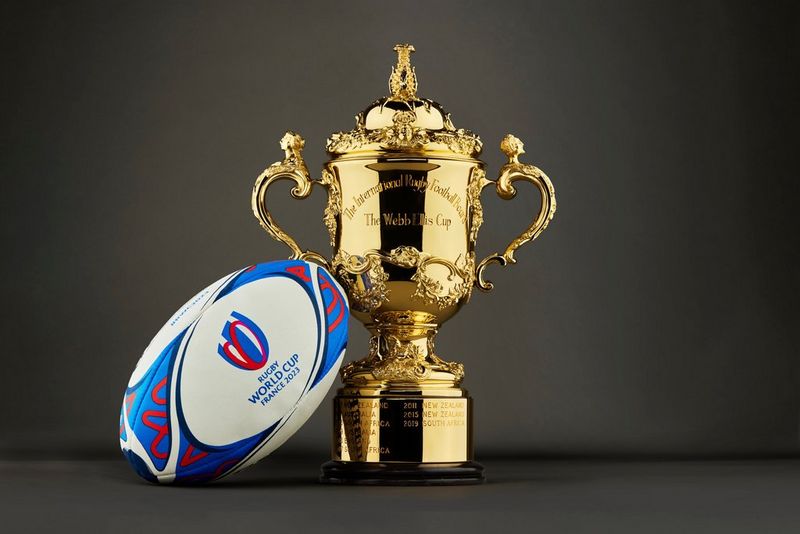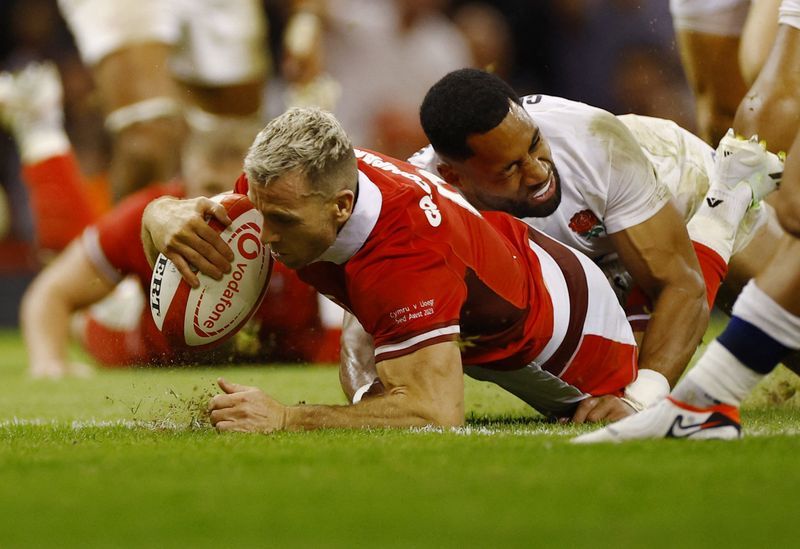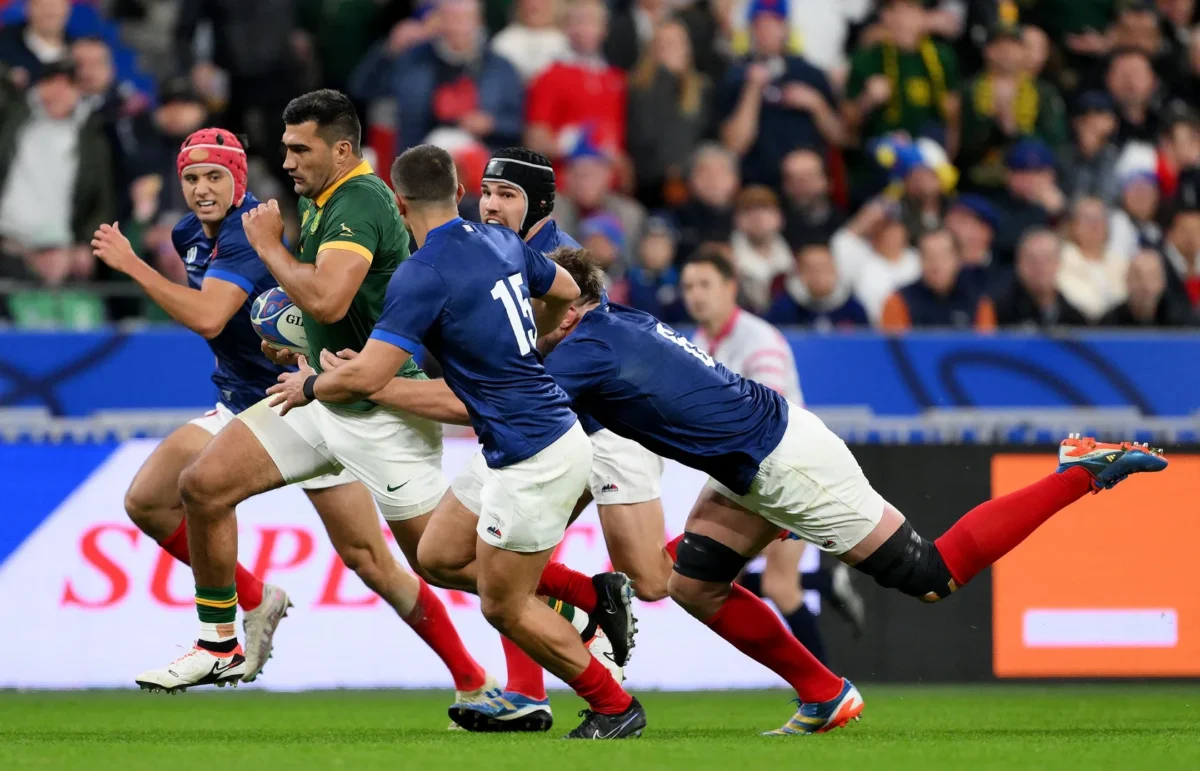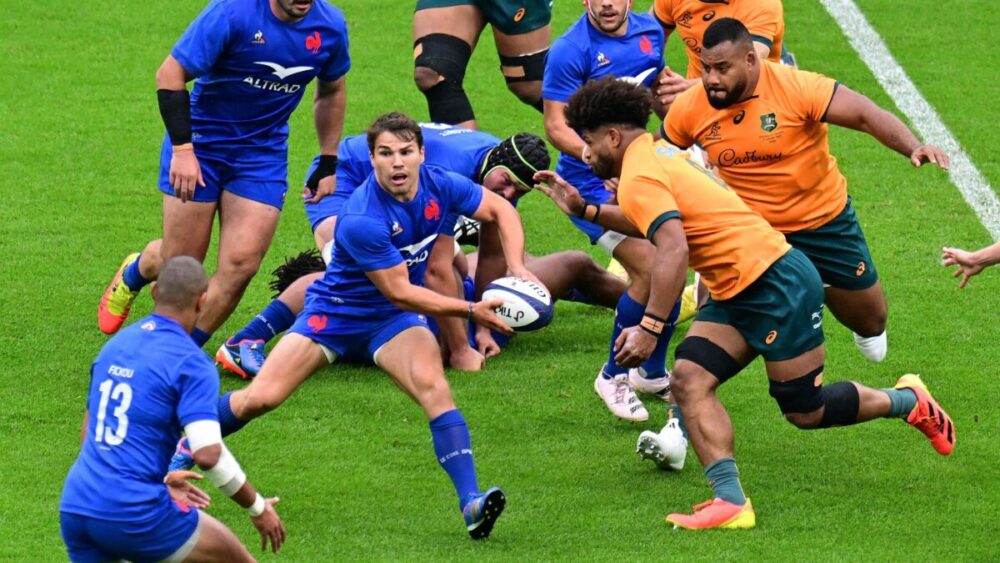The Rugby World Cup is now entering the knockout stages. Throughout the tournament, we’ve seen a selection of shocking upsets, awe-inspiring tries and stunning individual performances that have really put the tournament on the map.
Now the pool stage has reached its conclusion, we thought it was time to take a step back and analyze some of the wider trends and news stories from the competition. We then asked ourselves the question, what has the Rugby World Cup taught us about the future of the game? Here are four learnings…

#1 New Red Card Laws Have Changed Tackling Forever
The first round of fixtures in this Rugby World Cup showed us that the new tackling laws are likely to have a huge impact on the game as we know it. Now, head-on-head collisions will be viewed differently than ever before… especially if there’s no attempt to wrap.
From the moment Tom Curry received a red card for a high tackle two minutes into England’s opening game with Argentina, it was apparent that the new ‘bunker’ system would be influential in the Rugby World Cup and beyond.
However, since it has also become clear that although this review system is useful and will help reduce head-on-head collisions, it does need some refinement. After all, before fans truly accept it, the referees will need to show greater consistency in their decision-making process.
#2 South Africa’s Bench Split May Change the Way Replacements are Used
In their game against Ireland, South Africa used a ‘7-1 split’ in their replacements. This was a hugely controversial tactic that some claimed contravened the ‘spirit of the game’. However, Ireland coach Andy Farrell applauded the innovation.
By selecting seven forwards and just one back on their replacements bench, South Africa felt that they could get the edge upfront in this physical matchup. By contrast, Ireland went with five forwards and three backs as they felt it allowed them to be more versatile and respond to injuries and tactical tweaks better.
Overall, this discussion has been a bit of a storm in a teacup. However, it will be interesting to see whether more teams use their replacement bench innovatively in the coming years.

#3 Rassie’s Traffic Light System May Change Communication
Rassie Erasmus is no stranger to controversy. Throughout this Rugby World Cup, he’s used a traffic light system to communicate with people in the stadium.
Rumors have circulated that the lights have been used for a number of different reasons, including communicating tactics to players, getting information from coaches or finding out injury news from the medical team.
A pioneer and an innovator, Erasmus has always looked to change the game. So, will he ever reveal what the system actually does and will other teams then follow suit? We can’t wait to find out.
#4 The Northern Hemisphere Teams are Catching Up
Teams from the southern hemisphere have traditionally dominated the Rugby World Cup. After all, England remain the only team from the northern hemisphere to win the competition, and this victory came all the way back in 2003.
But now, the northern hemisphere teams are arguably the favorites for the tournament, and four northern hemisphere sides have reached the quarter-final stage.
With France facing South Africa and Ireland facing New Zealand in the next round, you could argue that both of the northern hemisphere’s finest sides will exit the competition at the quarter-final stage. However, it’s equally plausible that all four semi-final spots will be taken by teams from the northern hemisphere. These teams are undoubtedly catching up, and quickly.

Which of these running themes do you think will have the biggest impact on the game in the coming years? Let us know in the comments below.





